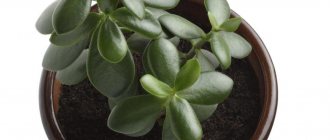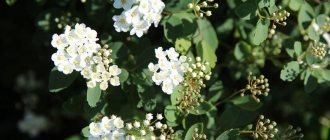What indoor asparagus looks like of different types and varieties: photos and names of varieties
Among the representatives of the asparagus family, a special place is occupied by edible varieties of asparagus, shown in the photo, which are grown for gastronomic purposes:
Today, for their aesthetically graceful appearance, plants are used for interior landscaping, creating original cascading ikebana flowers, arranging bouquets and other flower arrangements.
The huge variety of species and varieties does not allow us to unambiguously answer the question of what homemade asparagus looks like, since specific features and characteristics are always inherent.
However, general external characteristics characteristic of the vast majority of plants of this family can be distinguished:
- Herbaceous shrubs, lianas.
- Flexible stems.
- Leaf shoots are needle-shaped.
- Small flowers in inflorescences.
- Single-seeded decorative berries.
This homely, sophisticated asparagus flower with its lush green color will add freshness to any room and fill the atmosphere with coziness.
Modern breeding science knows more than 200 species of ornamental asparagus. However, not every species can be found in flower shops or in the collections of professional flower growers.
According to experts, no more than ten species are cultivated and grown indoors or in open ground.
For greater clarity, all descriptions of asparagus species are supplemented with photos and official names, which will help you understand in detail the specifics of each member of the family:
The most famous is the densely flowered asparagus ( Asparagus densiflorus ) - a powerful plant with sparse cladodes-shoots, its leaves are transformed into awl-shaped scales. The height of the bush is insignificant - only 45 cm, but due to the elongated shoots (more than one and a half meters), its width exceeds 6-7 m.
The leaves (or so-called phyllocladies) are small, scale-like. Once a year, the plant pleases its owners with flowering, represented by compact inflorescences of miniature white flowers. A week later, these delicate “fireflies” are replaced by round fruits of a noble burgundy color.
Breeders have developed excellent varieties of this asparagus:
"Myersii" - with distinctive shoots stretching upward.
"Sprengeri" - with characteristic long drooping branches.
's asparagus (Asparagus Meyeri) leaves are arranged much more densely in the form of a spindle. The herbaceous shrub is not large in size. Its height barely reaches 40 cm, but the branched shoots grow significantly in width - more than 5.5 m. This flower is popularly nicknamed “fox tail”, which is explained by the location of the ovaries, which gives splendor to each stem.
To figure out what this “fluffy” asparagus looks like, take a look at the photo, and you will certainly have associations with forest fur-bearing animals - after all, the “tails” in this case are shown in green color from the pot.
Crescent asparagus (Asparagus falcatus) is an excellent hanging plant that is easy to care for. It got its name due to the shape of the leaves, which resemble “sickles” with a rounded bend.
The dimensions of these slightly corrugated phylloclades are small: 5 cm in length and up to 2 cm in width. The distinctive properties of the plant are its rapid growth and cold resistance. Because of these features, this type is most often used to decorate verandas and glazed balconies, where the temperature is not always warm.
of pinnate asparagus (Asparagus plumosus) are especially elegant , which are wrapped in miniature thread-like leaves resembling scales collected in bunches.
During the flowering period, this type of indoor openwork asparagus produces tiny white flowers, which smoothly give way to dark blue berries. The fluffy, scale-like structure of the plant is widely used to decorate bouquets and ikebana flowers or to create interior partitions and decorative screens.
Just look at the photo of beautiful indoor asparagus species, and their sophisticated lace silhouette in a rich green color will certainly provoke the imagination to create a new decorative composition using them:
Along with indoor representatives, experienced gardeners grow garden specimens of the plant. The places where they grow can be open ground in summer cottages, greenhouses, and front gardens. Changeable summer weather with its characteristic slight coolness or drought is not an obstacle to the normal development of this flower.
The main garden species of asparagus shown in the photo is asparagus asparagus (Asparagus asparagoides var. myrtifolius).
For more than a decade, it has been widely used as decorative greenery in bouquets. Due to its unpretentiousness and beautiful appearance, many hybrid interpretations of it have been developed today.
A description of the varieties of asparagus with official names and photos will form a general idea of this wonderful representative of the flora:
Asparagus officinalis , popularly referred to as medicinal asparagus, is a tall herbaceous plant that can grow over 1.5 m in height. Branched thin stems bend from many sharp scaly leaves. During flowering, the plant is decorated with miniature amber flowers.
The next cold-resistant bush is Asparagus asparagus L. , which can often be found under the name white asparagus. This variety of asparagus is used for making medicines and also in the culinary industry. Externally, the plant has more powerful outlines than its decorative relatives. The height of individual specimens can be more than 2 m.
Green asparagus is considered a culinary variety of asparagus. A branched stem, small leaves, miniature flowers and dark blue oval fruits are its characteristic features.
The nutritious parts of the plant are considered to be sprouts, which are collected from May to June. The presence of a large amount of vitamins, fiber, and antioxidants was the main reason for growing this variety.
Description
An evergreen perennial that belongs to the Asparagus family. One type of asparagus is a favorite dish of the French and is called asparagus. Asparagus is even grown on special plantations.
The external structure of asparagus is also surprising. The part that many plant lovers call needle-like leaves is not actually leaves at all. This is a modified stem - cladode! Although the function of this part of the stem is the same as that of the leaves.
The leaves themselves can only be noticed by looking closely at the plant. These are small triangular scales on the stem. On some species the scales are quite hard, so many consider them to be spines.
Growing asparagus at home: light, temperature and soil
The indoor ornamental plant asparagus is one of the unpretentious and grateful representatives of the flora. It is enough to provide basic living conditions, and the flower will delight its owners with a luxurious bright green crown and sophisticated inflorescences.
Sun-loving shrubs feel comfortable on the western and eastern sides of the apartment. Since this location not only provides them with a lot of light, but also protects them from long-term direct exposure to sunlight. If the created interior composition with asparagus will look more harmonious in a southern room, then it is advisable to place it away from the window. From late spring to early autumn, such a flower can be left on open verandas or balconies, the only warning is to avoid heavy rainfall and drafts.
When growing gourmet asparagus in ordinary home conditions, there are no special temperature requirements. According to experts, the temperature should be normal room temperature, cooler in winter, but not lower than 10°C.
Therefore, in the hot summer at 25°C, the plant will feel uncomfortable, and the leaves may even dry out. In such situations, even an increased level of air humidity will not be able to restore the fading stems - they will have to be removed.
Air humidity: does not matter. However, if the flower grows in extreme dryness, it will soon turn yellow and dry out. To obtain a more saturated and bright color of the leaves, you should regularly spray this ornamental bush.
Particular attention should be paid to the quality and composition of the soil. Substrate: flower soil mixture with 1/4 loam. If you have experience in preparing the soil yourself, you can mix turf and leaf soil, and also add a small amount of peat and sand.
By creating such a “cozy” habitat, gardeners prevent situations in which asparagus gradually dries out, while the plant, with its thick openwork crown and rich green color scheme, will only touch and delight.
Beneficial properties of asparagus
The plant is able to purify indoor air from harmful bacteria and microorganisms, heavy metals, and volatile substances.
Asparagus in the decor of the veranda
Asparagus-based products (tinctures, decoctions) are used in complex therapy in the treatment of stomach ulcers, epilepsy, tachycardia and arrhythmia, hypertension, rheumatism, liver diseases and dermatological problems, gout and other things, and prevents the formation of stones in the bladder. Therapeutic properties of asparagus: has a vasodilator, sedative, blood purifying, diuretic, analgesic effect.
Asparagus in vertical kitchen gardening
Some varieties of asparagus are edible and considered a delicacy. Young asparagus shoots are eaten raw, but are also good when stewed, fried or canned.
Asparagus in the decor of a country house
If all the conditions for caring for asparagus are met, then the plant will delight its owners for more than 20 years.
Proper care of indoor asparagus
Proper care of indoor sophisticated asparagus is possible even for novice gardeners, since minimal knowledge and little effort will delight you with excellent results.
Proper soil irrigation is the key to healthy and active growth of the green “pet”. Watering: constant moderate humidity. But it is worth considering the seasonality and cycles of life processes in the plant. Therefore, abundant and frequent irrigation should be in summer, and moderate in winter, when the flower is dormant. It is better to use the bottom watering technique, which allows you not to harm fragile trunks and leaves, and accumulate excess moisture in the trays.
It is important to choose settled water at room temperature as a liquid for such procedures. Spraying in hot and dry weather will be beneficial for the general condition of the bush, which should be done in the early morning or in the evening.
A significant point in caring for the decorative asparagus flower in the usual home conditions is proper and high-quality fertilization of the soil. Such feeding should be carried out weekly in the summer, and once every 4 weeks in the winter. When choosing fertilizers, you should give preference to universal complex mineral mixtures, which can be periodically replaced with weakly concentrated organic additives. Important! It is sensitive to chemicals, so it is better not to experiment with unverified manufacturers of mineral fertilizers.
What to do if the decorative asparagus turns yellow and crumbles?
Despite the unpretentiousness and hardiness of asparagus, when growing it, inexperienced gardeners may encounter various diseases and problematic situations. Among these are possible:
- Spots on leaves.
- Dark edges.
- Shedding and yellowing of foliage.
- Pale color of the leaves.
- General wilting of the flower.
Each of the listed unpleasant cases has its own causes and methods of “treatment”.
So, in order to determine what to do when decorative asparagus turns yellow and crumbles, you need to identify unfavorable factors and eliminate them. In some situations, this will be enough to completely heal the damaged flower.
Hot temperatures and increased dry air are contributing factors to wilting and yellowing of the foliage of the bush. Therefore, the solution here involves a forced decrease in temperature and an increase in humidity using traditional methods and special devices.
An alternative solution would be to change the location away from the switched on battery or heater.
Why do indoor asparagus leaves turn yellow, dry out and fall off, what to do in such situations?
The answer to the question of why the thin leaves of exquisite asparagus turn yellow may be excessive exposure to bright sunlight, as a result of which the plant develops a burn and characteristic yellowness.
Dry soil is another reason why the attractive indoor asparagus flower turns yellow. The frequency and intensity of water procedures should be reconsidered. However, you shouldn’t overdo it here either, since excess moisture contributes to rotting of the root system, which leads to wilting and death of the flower.
Therefore, it is important to find the “golden mean” in the watering regime in order to achieve a healthy green shine of stems and leaves.
Beginners often wonder why homemade asparagus dries out, when the answer may be quite simple - lack of lighting. In such cases, the course of treatment is elementary and involves changing the location of the flower pot with greater intensity of sunlight. As for dried branches, they should be cut off, since they cannot be “restored” and only spoil the appearance of the indoor “handsome”. By following these recommendations, even a beginner can ensure that the flower will soon delight you with new succulent shoots.
The reason why the bright green asparagus leaves turn yellow and fall off may also be due to harmful insects, which, by parasitizing, disrupt the normal life cycles of the plant. Among the pests of this plant, the most frequent “guests” are:
Aphid.
Spider mite.
Shield.
Aphids, which appear on an ornamental bush after “walks” in the garden in the summer, not only deplete it, but also cause the leaves to dry, wither and fall off. The only way to “expel” these pests is to treat them with special insecticides and provide comfortable growing conditions for the bush to renew lost “strength”.
Among these modern drugs, the most effective will be:
- "Agravertine".
- "Confidor".
- "Etisso."
- "Talstar."
- "Bazudin."
In a situation where asparagus is left for a long time in a dry, poorly ventilated room, there is a high probability of spider mites appearing. These parasites, feeding on the juice of the stems, deplete the plant, as a result of which the leaves of indoor asparagus wither and turn yellow. The question of what to do in such situations and how to deal with uninvited “guests” is one of the most frequently asked by beginning gardeners.
As a treatment, it is worth spraying the crowns of the bush with a concentrated solution of Actellica, and subsequently, for prevention, carry out irrigating procedures with warm water, covering the soil.
Parasitism by scale insects may also explain why asparagus leaves suddenly turn yellow. The list of what to do with this problem will be similar to the actions when fighting spider mites. However, you should first clear the stems of insects, which resemble brown convex plaques. An alternative folk method of getting rid of such pests can be a soap solution, but the difficulty will only lie in its subsequent washing off by repeated spraying with clean water.
Experienced flower growers, having analyzed the habitat and basic care conditions, can immediately determine the reasons for the deterioration in the “well-being” of the home “lace” bush. And this is already a large part of the path to full recovery and its active growth.
Diseases and pests
If asparagus is not properly cared for, the following problems may arise:
- After pruning, the shoots stopped growing . Cut stems no longer grow - this is a feature of this plant. However, over time, many young shoots will appear.
- Spots on foliage . The plant does not like direct sunlight. They can lead to the appearance of spots - these are sunburns. Also, due to the sun, the edges of the leaf blades may turn yellow and the foliage may fly off.
- Falling leaves . This occurs due to too much light or very dry indoor air. And also because the plant is in too dark a place.
Next, we describe the insects from which the plant can suffer:
- Scale insects - located on leaves and shoots. The flower begins to turn yellow and may die. Infected areas should be treated with soap or alcohol solution, as well as Karbofos or Actellik. Repeated treatment is carried out after 10 days.
- Greenhouse thrips is a pest that sucks out the sap of the plant, causing it to wither and dry out. It is necessary to increase the air humidity and treat the plant with a solution of Pyrethrum, Karbofos or tobacco decoction. Repeated treatment is carried out after 10 days.
- Gray rot affects fruits and berries as a result of waterlogging and changes in air temperature. A gray coating appears on them. The flower must be treated with Bordeaux mixture, Bayleton or copper chloride.
- Aphids and spider mites - white spots appear, and over time the plant fades. For treatment, use a soap solution, acaricidal agents and spray the plant more often.
- Waxbugs - black spots appear on the leaves. Pests are removed with a cotton swab dipped in an alcohol solution.
Watch the video ! Asparagus care
The procedure for transplanting asparagus at home
An important step in the process of growing ornamental asparagus is its proper replanting, which should be done if necessary.
There are several situations for which this procedure must be carried out:
- After purchasing in a store.
- The flower has “outgrown” the pot.
- Changing the soil to a more fertile one.
- There are pests in the soil.
In addition, according to experienced gardeners, an adult plant that has reached the age of five must be replanted regularly at least once a year. This will have a beneficial effect on the active growth and development of the green “pet”.
The process of transplanting decorative asparagus in familiar home conditions is not particularly complicated, so even a beginner can perform it correctly. The entire sequence of the procedure covers the following steps:
- Choosing a new pot.
- Preparation of nutritious soil.
- Preparing drainage for the container.
- "Migration" of the bush.
- Careful flower care.
The new container in which asparagus will grow should be slightly larger than the previous one. The first obligatory layer in the pot is drainage, which performs a critical function for normalizing the level of moisture in the soil.
Particular attention must be paid to the preparation of the substrate, since it is its composition that will largely affect the active growth and development of the flower, or will lead to their slowdown. For inexperienced gardeners, it is better to use a universal mixture, which is available at any flower shop.
And those who understand the technique of preparing the substrate can get it by mixing leaf soil, humus and sand.
After carefully transplanting a flower to a new “residence,” it is important to carefully and attentively care for it for the first two weeks, after which you can add small doses of fertilizer to the “diet” and use water “baths” for the leaf crown. It is better to transplant in the spring, when the plant is at the stage of active growth.
Basic methods of reproduction
Asparagus can be propagated by dividing the rhizome of the bush, by cuttings, and it is also possible to grow the plant from seeds.
How to grow asparagus from seeds at home
Today, any flower shop offers a wide variety of asparagus seeds. You can also get them yourself, but the difficulty is that most species begin to bloom in indoor conditions eight to ten years after planting. If flowering does occur, then you can use artificial pollination. When the fruits are ripe, you need to collect them and extract the seeds.
It should be remembered that asparagus fruits are poisonous, therefore, during their formation and ripening, the pot with the plant should be placed in a place where small children and pets cannot reach. You should wear gloves when removing seeds from the berries.
It is advisable to sow immediately after collecting the seed material in order to obtain a high percentage of seedlings. To do this, the seeds are distributed over the prepared substrate, covered with a very thin layer of soil on top and moistened.
Containers with plantings are covered with glass or plastic film and sent to a bright place with an air temperature of about twenty-five degrees. The shelter is regularly removed to ventilate and water the crops. Germination should be expected a month after planting the seeds.
Once they reach a height of ten centimeters, you need to pick them. Then, in the summer, they are transplanted into separate pots with a diameter of no more than twelve centimeters and given the same care as adult plants.
How is asparagus propagated by cuttings?
It is advisable to carry out cuttings in the spring. To do this, you need to select mature, strong shoots and trim them. For rooting, boxes with wet sand are best suited. The cuttings should be covered with glass jars and placed in a bright and warm room. After a month and a half, when the plants take root and begin to grow, they can be planted in individual pots.
Propagation by dividing rhizomes
Propagation by dividing asparagus rhizomes is the simplest and most reliable way. During transplantation, a large bush is divided into several parts. To do this, the plant is pulled out of the pot, old shoots are cut off, and the rhizome is cleared of soil and washed. Then it is cut into medium-sized pieces with a sterile knife.
Planting containers are filled with drainage and appropriate soil, which is pre-moistened. Plantings are sent to a shaded place with an air temperature of about fifteen degrees. With this method of propagation, asparagus takes root within a month. After this, they can be transferred to a permanent place of growth, and they can be cared for as usual.
Do I need to prune asparagus and how to prune it?
Many amateur gardeners are wondering whether it is necessary to periodically trim overgrown asparagus, and whether such manipulation will be useful. This procedure is necessary because it can help achieve better aesthetic results and increase the level of decorativeness of the flower.
It is worth pruning indoor asparagus in the spring. It is then that the plant has enough strength to renew and quickly replace dried out old stems. After removing the “bald” branches, the flower actively produces young shoots, which give the bush greater splendor and attractiveness.
Temperature
During the warm season, the ideal temperature is 20 degrees Celsius. During the dormant period, which lasts in winter, the temperature can be reduced to fifteen degrees.
Read here Bamboo curtains - material features and combination options
The plant tolerates sharp fluctuations in air temperature well, but precipitation can damage the soft stems. That is why the plant must be protected from the harmful effects of precipitation.
Growing ornamental asparagus from seeds at home
Creating indoor greenhouses and decorative compositions in the interior is impossible without mastering the technique of propagating sophisticated asparagus in familiar home conditions. However, there are no difficulties in this process, and even a lack of experience in floriculture will not be an obstacle to achieving excellent results.
In practice, the following reproduction methods are used:
- Seeds at soil temperatures from 20 to 25 ° C.
- Young cuttings.
- Dividing the bush.
Each technique has its own advantages and implementation features, once you understand them, you can easily grow a luxurious, lush bush with lacy branches and elastic stems.
The most durable of all alternative methods is the process of propagating asparagus from collected seeds from a mature bush at home. Planting material is formed in the ripened fruits of the flower, usually in winter. And here the procurement of seeds should not be put on the back burner, since their greatest productivity occurs in the first days after collection.
First you need to place the seeds in a prepared mixture of peat and sand, which should be regularly moistened and covered with glass or polyethylene. It is important that the seeds are covered with soil; they germinate in the dark.
The germination rate of seedlings depends on daily soil ventilation, temperature conditions and proper irrigation. It is necessary to maintain the same temperature, trying not to exceed +21...+22°C.
Condensation that periodically appears on the glass indicates the need to “refresh” the air. Therefore, it is worth raising the insulating elements and allowing the soil to fill with oxygen. This vital action will help speed up the growing of ornamental asparagus from collected seeds at home and give young seedlings energy for germination.
In these comfortable conditions, the first shoots will appear within 4 weeks. As soon as the seedlings reach 10 cm, they can be planted in separate miniature pots with soil, which is the same in composition as for adult relatives.
Growing elegant asparagus using seeds will require a little patience, since only after six months can you evaluate the results of your efforts.
Features of cultivation
Caring for asparagus is not difficult, even a beginner can do it. Care is typical for all types of plants. The most important criteria are watering and lighting. By observing small nuances in care, the flower will become a real decoration of your room.
Soil selection
You can purchase universal soil in specialized stores, or you can prepare the soil substrate at home yourself. To do this, you need to take sand, greenhouse or leaf soil in equal proportions. It is good if it is possible to add forest turf to the mixture.
Lighting
All representatives of the asparagus family are quite light-loving. Indoors they must be placed in the brightest places. The ideal location is windows facing northwest or northeast. In the shade, the perennial will look weak and frail.
Only Sprenger asparagus can be grown on a south window, as it tolerates direct sunlight well, which cannot be said about other varieties. The remaining specimens are placed a short distance from the south-facing window.
Flowers located on the windowsills on the east and west sides are shaded with a tulle curtain. Flowers bought in a store or after winter dormancy need gradual light adaptation: from lower to higher intensity. In this case, you can use phased shading.
Temperature and humidity
Asparagus feels comfortable at room temperature; fluctuations from + 15 to + 25 degrees are not critical for the plant. At constant elevated temperatures (from +25), the stems of indoor perennials may dry out, which will affect the condition of the foliage. To prevent this from happening, asparagus must be sprayed regularly.
A representative from the tropics needs high air humidity. The spraying procedure must be carried out all year round, since in winter the air dries out due to heating devices. Humidity can be increased by placing the flower pot in a container with sand for a while.
The hardening procedure is also useful for tropical plants. In summer, asparagus can be placed on the balcony for several hours, increasing the duration over time to several days.
asparagus in the mini garden
Watering
Asparagus requires plenty of water during the summer months. It is important to ensure that moisture does not stagnate in the pot. Two to three times a week is the approximate frequency of watering. The top soil layer can serve as a guide: it should be dry. The remaining water after watering must be drained from the pan. In winter, the frequency of watering and the volume of water are reduced. In spring, watering should be increased gradually.
Fertilizer
Active growth of asparagus is observed during the spring growing season. At this time, the flower needs a sufficient amount of nutrients. The plant needs to be fed with complex fertilizer once every 15 days. Fertilizer should be applied after watering, when the substrate is moist and minerals are better absorbed. Once a summer season it is recommended to apply organic fertilizer, which will increase the growth of young shoots.
Foliar feeding is useful for asparagus. The growth stimulator “Bud” is suitable for spraying leaves: dilute 1 gram of the drug in 1 liter of water. After this procedure, the shoots with leaves acquire a rich color, healthy, fresh appearance.
Transfer
Young asparagus require annual replanting, as they grow quickly and the overgrown root system does not have enough space in the pot. It is enough to replant adult specimens once every two to three years. If the perennial is not replanted at all, the tubers will appear above the soil surface, and the flower will lack moisture and nutrients.
In addition, examining asparagus during transplantation will help to detect diseases in a timely manner, and therefore take appropriate measures.
The right time for this procedure is spring. The plant gradually adapts to new conditions and actively grows. The container for transplantation should be 2-3 centimeters larger than the previous one. The peculiarity of the plant is that until the root system fills the pot, the greenery does not grow.
Transplant stages:
- Water the plant before transplanting.
- Carefully remove the flower from the container.
- Inspect the rhizome, remove rotten roots and old dried branches. You can trim long protruding roots, this will give growth to young shoots.
- Place drainage at the bottom of the new container (small pebbles, expanded clay, ceramic shards). Sprinkle with prepared soil.
- Place the renewed asparagus in a pot, covering it with soil at the same level.
- Moisten the earth.
- To adapt to new conditions, place the flower in a place that is not too lit for five days.
A store-bought plant also needs to be replanted. You can use the transfer method: without reducing the volume of the root system and without shaking off the soil, carefully move the asparagus into a slightly larger container.
Trimming
Should I trim asparagus or not? The answer to this question varies among flower growers. Some believe that this procedure does not benefit the perennial, but, on the contrary, slows down its growth, because the plant spends energy and strength on the formation of new shoots. The opinion of other flower growers is that pruning is necessary to rejuvenate and give a decorative appearance to indoor exotic flowers. It is better to observe the “golden mean”. In spring, carefully remove only dried and old unattractive stems. The cut branches will not grow again, but the growth of young shoots will be activated.
Winter care
The plant needs rest in the winter so that it gains strength for the new growing season. The dormant period begins in October and ends in March. The ideal place for recovery is a cool room with a temperature of at least + 12 degrees, quite bright. At this time, the plant does not need feeding, and watering should be minimal - once a week. Often, such conditions cannot be created. In this case, asparagus needs to be sprayed to prevent the appearance of spider mites, which appear in dry air.











